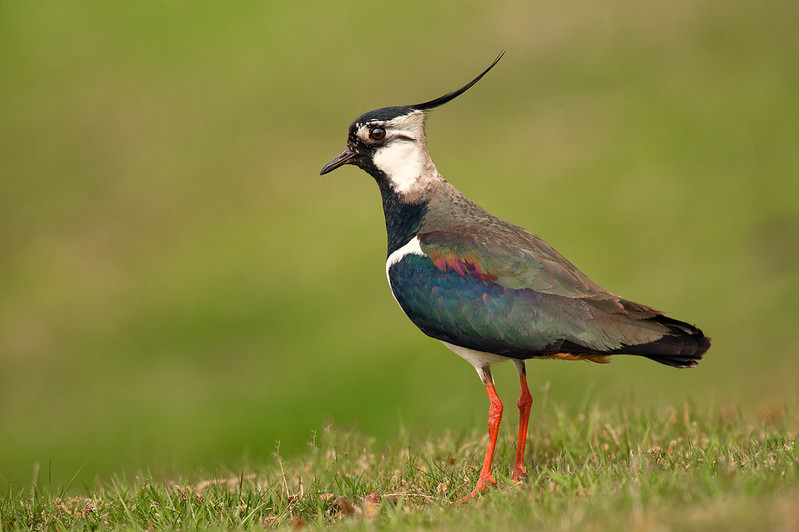Spring is definitely in the air, and there's nothing better than seeing the first lambs gambolling in the dales and the return of three of our iconic wading birds, curlew, golden plover and lapwings to the high moorland.
It's the traditional time to see mad March hares 'sparring'. It's actually courting behaviour, as the females fend off the amorous advances of the male. Brown hares can be seen courting any month of the year, but spring is the best time, when hormones are high and green fields and farmland have yet to grow lush and obscure their antics. They can chase at 40mph! You'll have a good chance of seeing them in any of our open areas such as fields, grassland, meadows, moorland and woodland edges across the North York Moors and Howardian Hills.
Our tip
The aerobatic courting displays of the lapwing are a real treat. Its wide boxy wings give a ‘lapping’ sound as it flies steadily skyward, making its call of ‘p’weet, p’weet’. Eventually it turns to plunge downward and then twists and rolls, seemingly out of control. Head north out of Osmotherley on the Cleveland Way and up onto Scarth Wood Moor for good sightings. It’s a great place to see curlew and golden plover too.

Also look out for:
- Common frogs and toads starting to spawn in ponds and reservoirs. Toads emerge from winter hibernation on the moors and follow the same migration route back to their ancestral ponds each year. In Osmotherley thousands of toads regularly try to make their way to Cod Beck Reservoir, crossing a busy road in the process. Toad crossing signs are set up and dedicated volunteers patrol the road to help the toads cross safely. The toad patrol is part of a national campaign called 'Toads on Roads', coordinated by the national wildlife charity Froglife, and they're always after more willing people to help with the patrol.
- Adders emerging from hibernation as the days warm up, basking in the sun. You may see some frenzied tussles in the undergrowth, with males looking for females and wrestling with other males for supremacy. Adders are protected by law against being killed or injured through human activity. The snakes have a venomous bite, so care must be taken. Respect the snake, admire it from a distance and it won’t feel provoked to defend itself. Good places to see them are in conifer woodlands, including Dalby and Langdale Forests, near Pickering; Harwood Dale; and Wykeham and Broxa forests, near Scarborough. Alternatively join Yorkshire Coast Nature on one of its Forest and Moorland Wildlife safaris.
- Spring migratory birds at Scaling Dam where a bird hide assists viewing of passage migrant and scarce wildfowl, including shoveler, gadwall, goosander and osprey.
Walk of the month
This month why not try a spot of beachcombing at Runswick Bay, the country's top beachcombing beach? Big tides and winter storms at sea can bring lots of beautiful shells to the surface, which are left lying on the shore, along with countless other curious flotsam and jetsam. Driftwood, giant seaweed, odd sponges, ammonite fossils, shiny pieces of jet, and even shark egg cases might turn up.
Plan any visit around the tide. You can buy a copy of the tide timetable at various shops up and down the coast. Alternatively, find it in The Baytown Chronicle magazine or check the tide times online. Set out at least an hour before low tide to give yourself enough time to walk out and explore before heading back.
